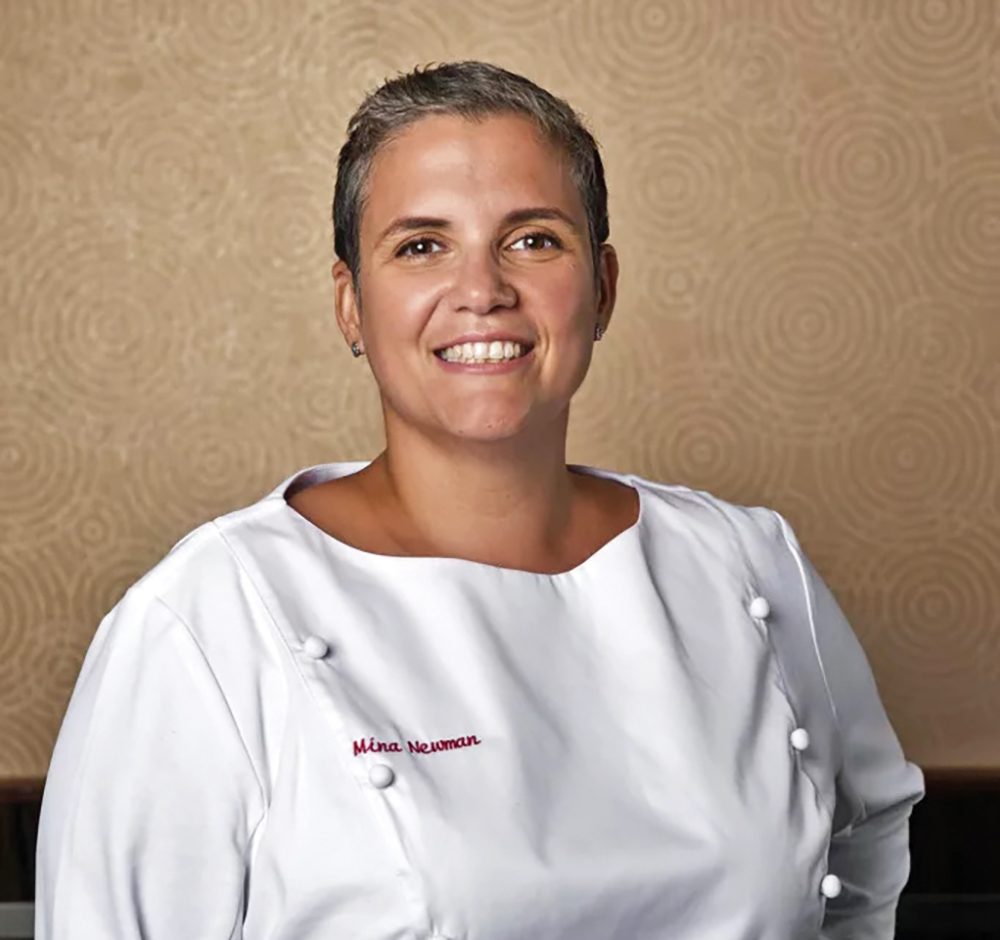
“What’s a good kosher restaurant for a business meeting if most of the people coming don’t keep kosher?”
This is the kind of question that a kosher restaurant columnist gets asked… a lot. One of my answers has always been Sen Sakana. Not only does it have top-notch ambiance and delicious food, but the restaurant itself hasn’t always been kosher.
Owner Allan Wartski, a long-time veteran of the restaurant business, decided to make the switch when reopening Sen Sakana after COVID-19. His rabbi (Rabbi Michel Gerkov of Chabad of Passaic County) had been prompting him to open a kosher restaurant for years.

The result is a restaurant that is not only one of Manhattan’s finest kosher eateries, but also one of the city’s best Nikkei spots as well. Nikkei cuisine is the fusion of Japanese and Peruvian food that began just over 100 years ago when Japanese immigrants imparted some of their techniques on the local cuisine in the Peruvian capital of Lima.
Executive Chef Mina Newman is of Peruvian descent and spent time there in order to learn more about the cuisine so she could do it justice back in New York. Though she had been victorious on an episode of the Food Network’s “Chopped,” the challenge of sourcing kosher ingredients to make Nikkei food proved to be a totally different level of difficulty.
“Our supervision allows us to import certain ingredients from the Chabad of Osaka,” said Newman about her logistical accomplishment. “Shiso, yuzu and bonito flakes are some of the things we use to craft the specific tastes of Sen Sakana.”

When I was invited to sample the delicacies of Sen Sakana, I was impressed by the depth of the menu. Most high-end places don’t cover as much ground as Sen Sakana does, but I was glad to have so many options. The wider selection allows for a more in-depth look at a cuisine some patrons might not be familiar with.
Many people will start their meal here with sushi. There are seats at the sushi bar and omakase service if that’s something you’re interested in. While this is certainly a valid route given the quality of the product, if you only have one night here, I’d advise mixing sushi with the rest of the menu for a more representative experience. If you’re looking to pick one roll, try the Spicy, Smokey, and Crunchie. Filled with a trio of avocado, cucumber and asparagus and topped with torched salmon, spicy mayo, jalapeño and masago, this roll has a little bit of everything. The flavors, textures and heat all come together in what might be the best roll of sushi I’ve ever had.
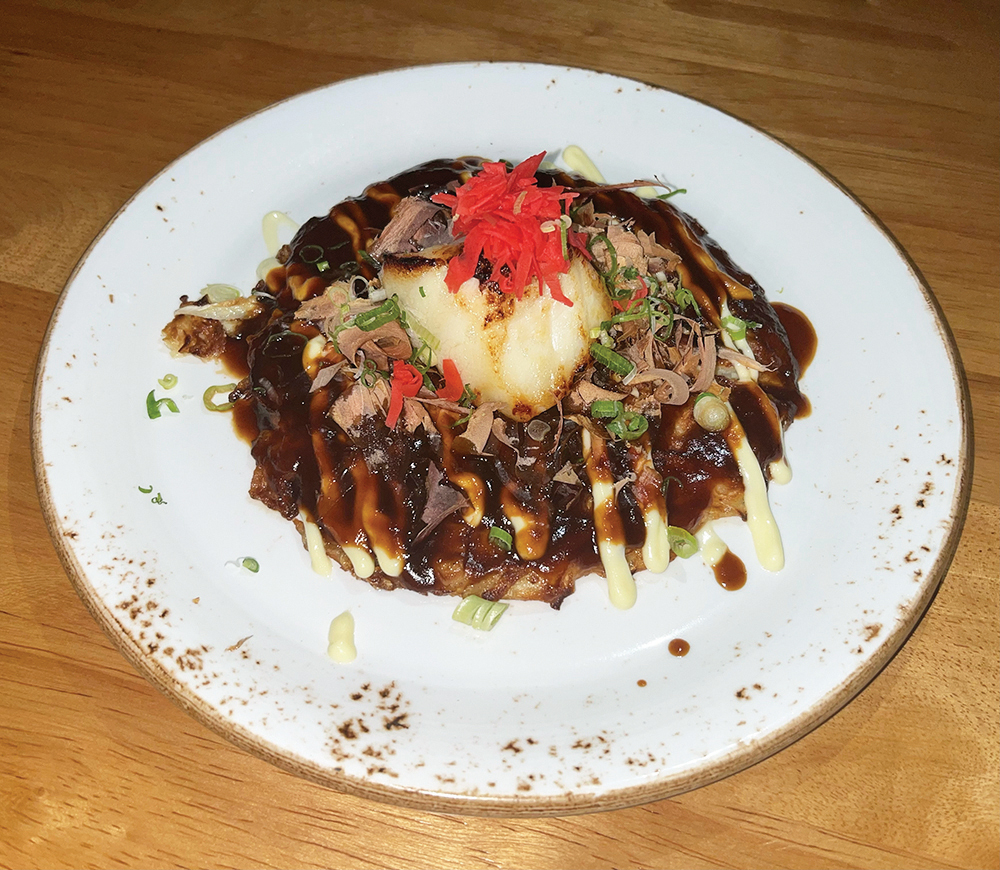
For a more traditionally Nikkei raw fish order, you must get ceviche. There’s more than one type on the menu, but I suggest the Ceviche Nikkei. Almost certainly the most famous food in its genre, ceviche is raw fish marinated in a leche de tigre (a mixture of citrus juice and seasonings). This version uses torched salmon and yuzu (a Japanese citrus fruit) served with shiso (Japanese mint) and cancha (crispy Peruvian corn). The result is a strong acidic punch that brings out the flavor of the salmon amidst the many varying textures.
While you can probably find ceviche in some other kosher restaurants, the same probably can’t be said for the BBQ Chilean Sea Bass Okonomiyaki. This Japanese street food is a pancake that’s topped with cabbage and scallions before being sprinkled with katsu (the Japanese equivalent to BBQ sauce), bonito flakes and pickled ginger. I know, you might be reading these ingredients in confusion, but there’s a reason this is so popular on the other side of the world. It might take a brave eater, but the reward might just be the best bite of your night.
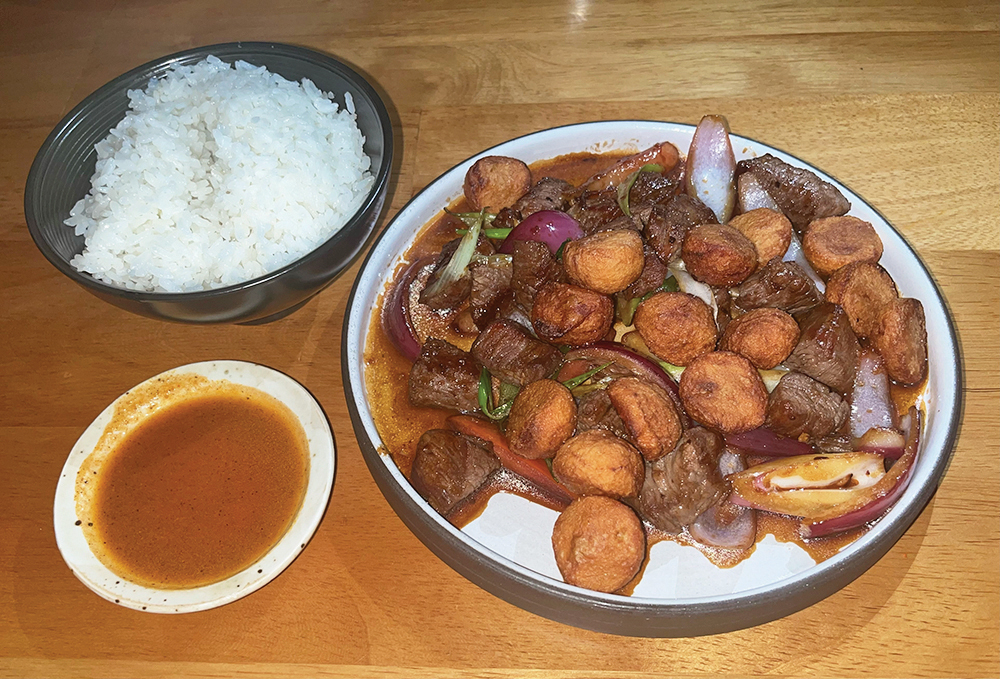
While the bites at Sen Sakana are great on their own, the restaurant also sports a full bar and happy-hour specials. As you might expect, the bar imports an impressive selection of offerings that pair with the food. They have signature cocktails, a sake menu, beers from both Japan and Peru and a wide variety of spirits that might interest you as well.
For your main course, you can’t go wrong with the Lomo Saltado. The ingredients are familiar: beef, tomatoes, onions and potatoes. You’ll get the mixture after it’s been stir fried with garlic and soy sauce. If you can’t tolerate really spicy food, you might want to just eat what you have right there. And don’t get me wrong, it’s still really good. But you can also put the stir fry atop the side of white rice and mix in the aji amarillo sauce. It’s probably hotter than anything on the menu at your standard kosher restaurant, but it’s amazing. Aji amarillo is made from yellow hot peppers and brings a specific flavor along with some serious heat. If you think it’s up your alley, go for it.
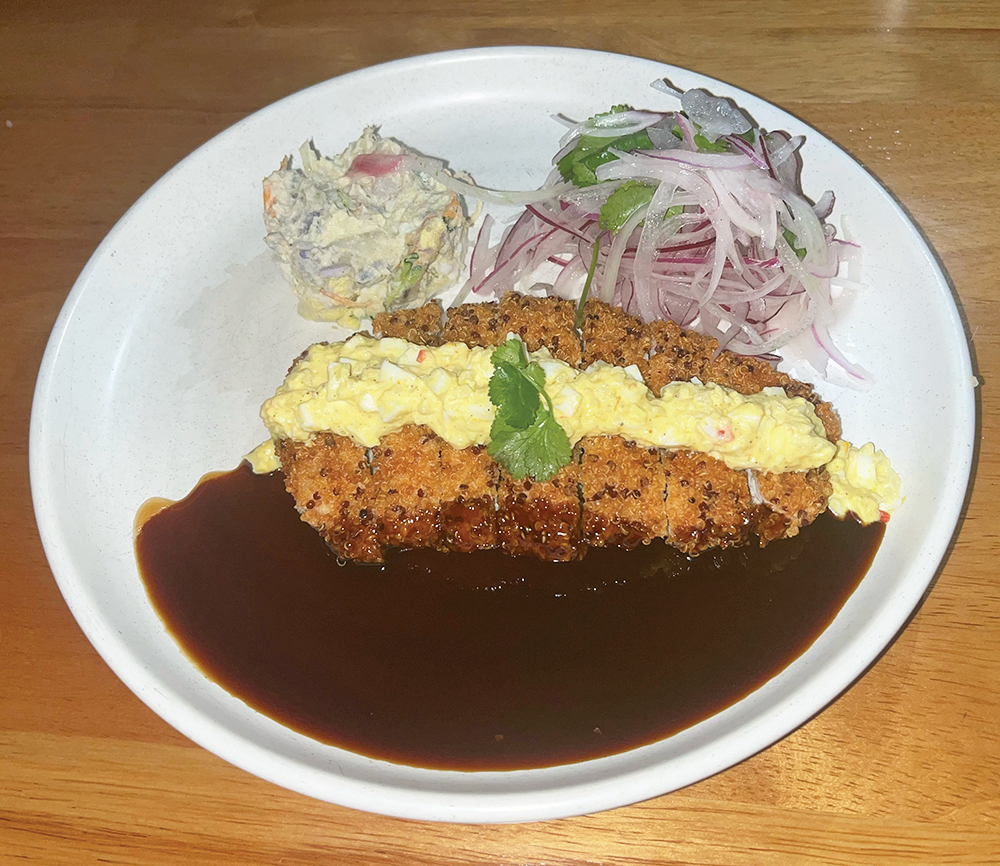
Looking for a more mild entrée? The Quinoa Crusted Chicken Breast comes topped with an aji amarillo tartar sauce, but the creaminess allows you to get the flavor without the heat. The super-crunchy filet is served with a Japanese sweet and sour sauce and a purple potato salad. This might be a good option if you’re trying to find something on the menu that you know you’ll like. The components are expertly assembled into something you probably haven’t had before, but you can likely figure out if it’s your speed.
Sen Sakana is a singular experience in the kosher world. With the kosher restaurant world ever expanding, we can only hope to get more restaurants like it. But for now, you’ll just have to make your way to Manhattan if you want that unique taste.
Don’t worry, your journey is probably shorter than the one from Japan to Peru.
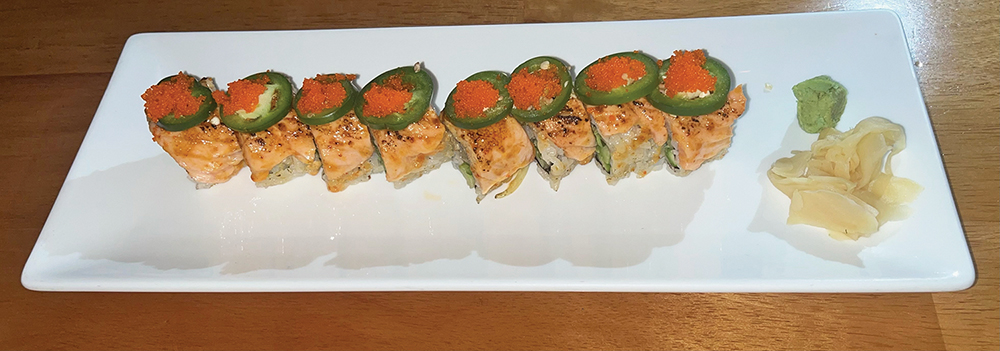
Nati Burnside is a freelance writer living in Fair Lawn and is a man of many interests. He can be reached at NatiBurnside@gmail.com.








